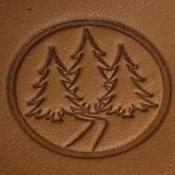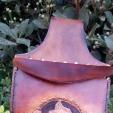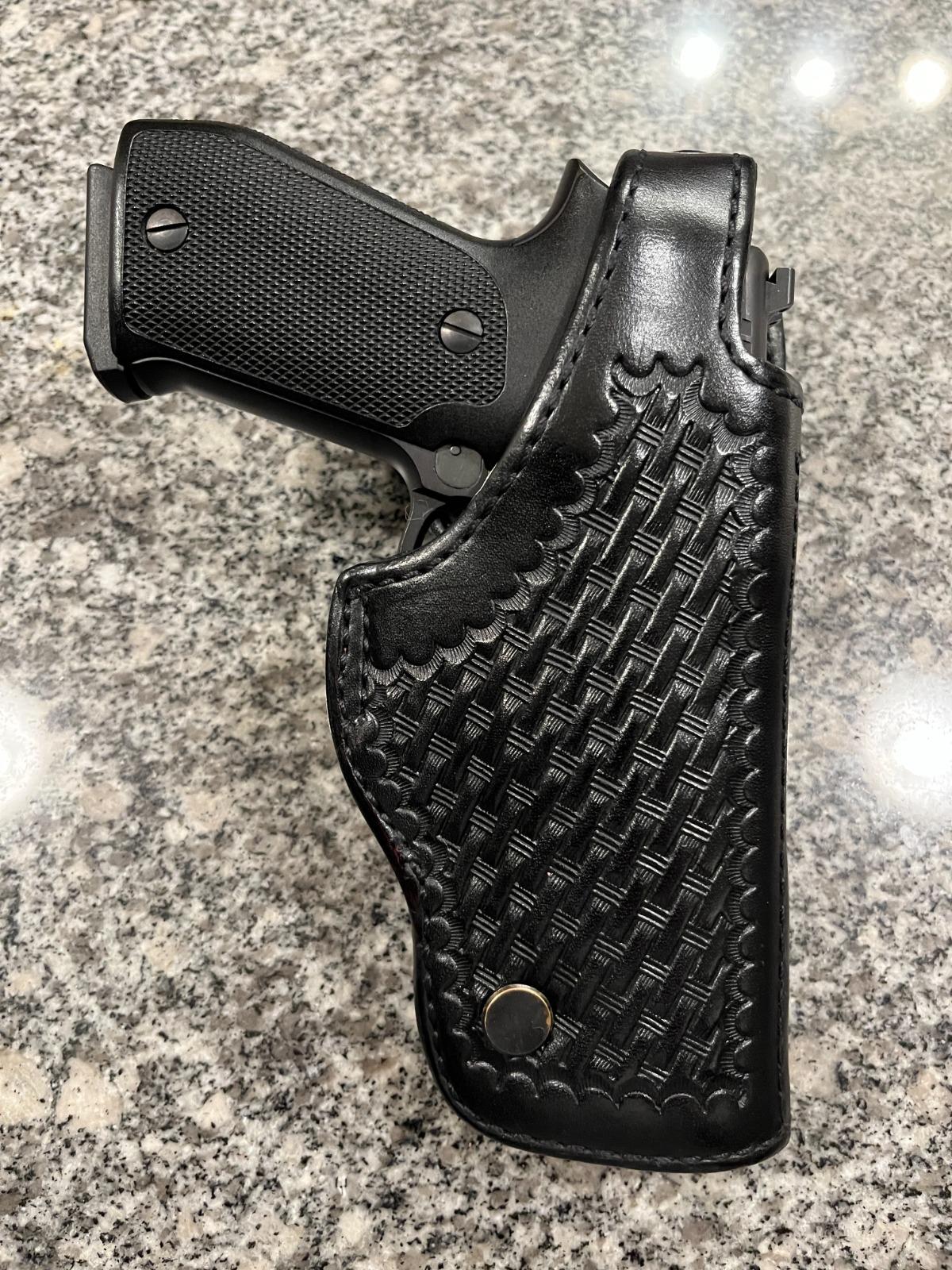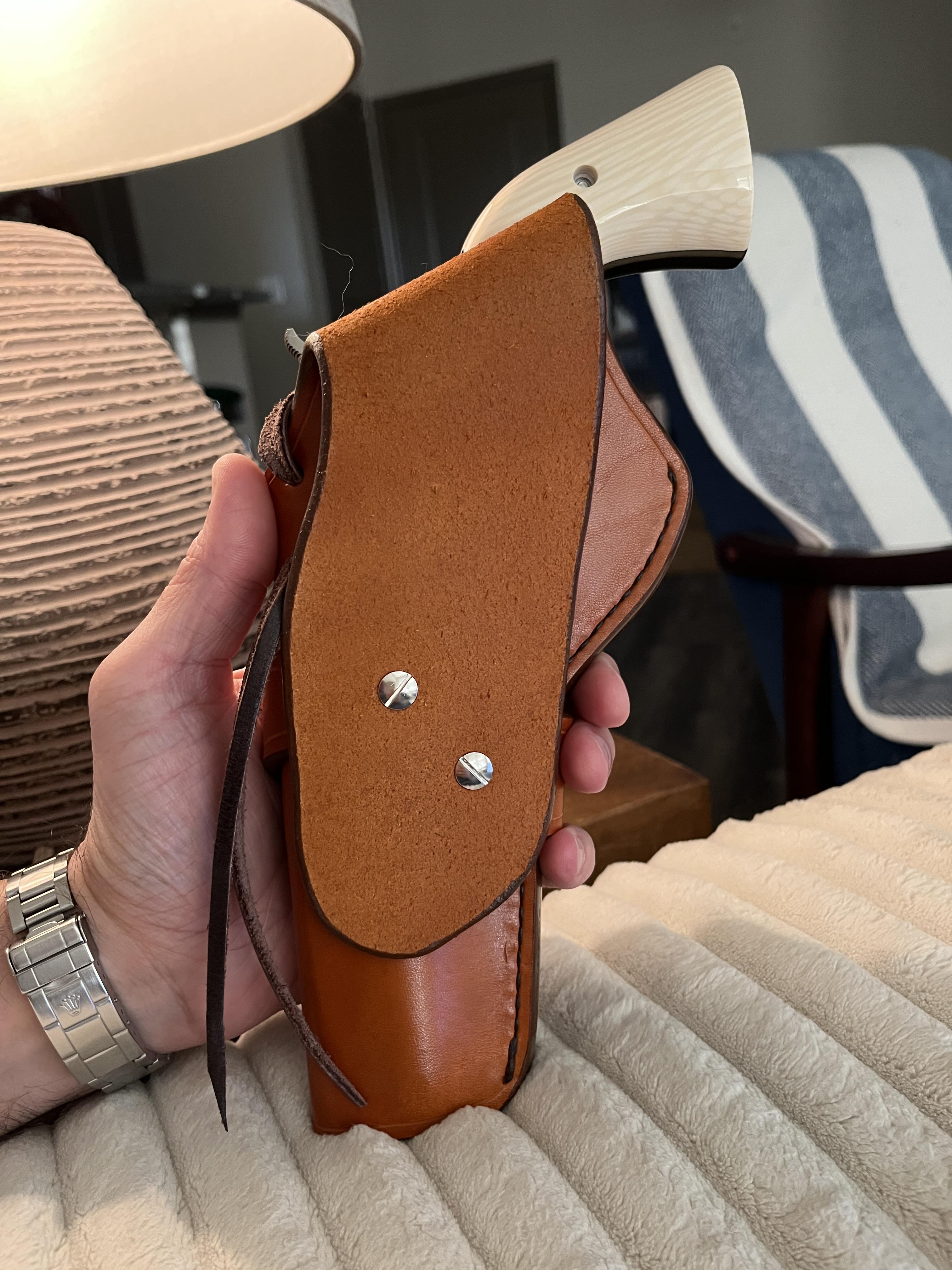Hi folks,
A year or more back, I posted on here about a pattern I'd created to make leather holsters for my two long-slide Glock pistols. They were thumb snap, cross-draw, which was something I just couldn't buy on the open market, so I had to "roll my own." Had a massive thick headache-inducing welt the same thickness as the Glock trigger guard.
Recently, I have been shooting some of my single action revolvers and making holsters for them, but in a strong side, old-west style. And this got me to thinking that I'd like to be able to have one of my long-slide Glocks at "gunfighter" position for long hikes in the woods.
Anyway, I adapted my sixgun holster pattern (pic for reference) and made the necessary adjustments to accommodate the Glocks, as well as their red-dot optics. Most importantly, I did away with my massive welt and just used a 1-ply welt, then bent the holster to create ears covering the trigger guard, as I typically seen done on leather Glock holsters. Saved a whole lot of work, for sure!
I haven't found the need for any sort of retention strap, as the holsters were wet-molded to the guns and seem pretty secure. At any rate, if they ever loosen up to a point where retention is needed, I can pretty easily retro-fit a strap that would snap to the holster loop, which comes on and off via Chicago screws around back.
Just posting these as they're kind of a novelty, but also, I had someone ask me for the pattern for my thumb snap version, so if anyone would like a copy of this pattern, I'm happy to provide—might save you some trial and error.
Regards,
DeWayne









